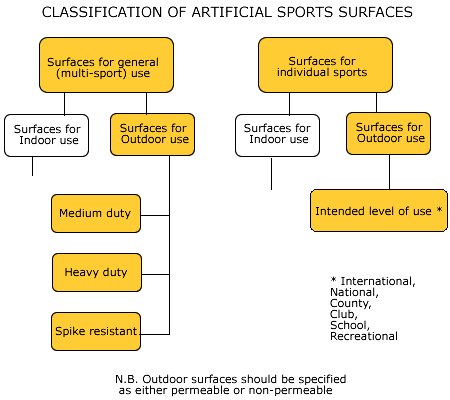This British Standard has been developed "...to standardize test methods, to specify requirements for durability, playing performance and safety and to give guidance on the characteristics of artificial surfaces".
This general introductory document provides an excellent insight into understanding the requirements of artificial sports surfaces, both indoor and outdoor.
The different types of artificial sports surfaces are classified as follows:

The actual types of surfaces covered within this standard include:
- Concrete,
- Coated macadam,
- Timber,
- Composition,
- Textile, and
- Polymeric
Recommendations for the different types of surface and performance parameters are provided in the form of a detailed matrix chart covering a comprehensive range of sports.
A description of the performance parameters is also included and these are classified into four main areas:
- Dimensional (i.e. the area should be appropriate in size for the sport),
- Durability (i.e. the life of the surface),
- Safety (identifying the different types of injuries that are associated with these sports surfaces - abrasion; friction burns; bone fracture; muscle strain and twisting of joints),
- Playing performance (rebound resilience; rolling resistance; spin; friction; stiffness and energy absorption).
